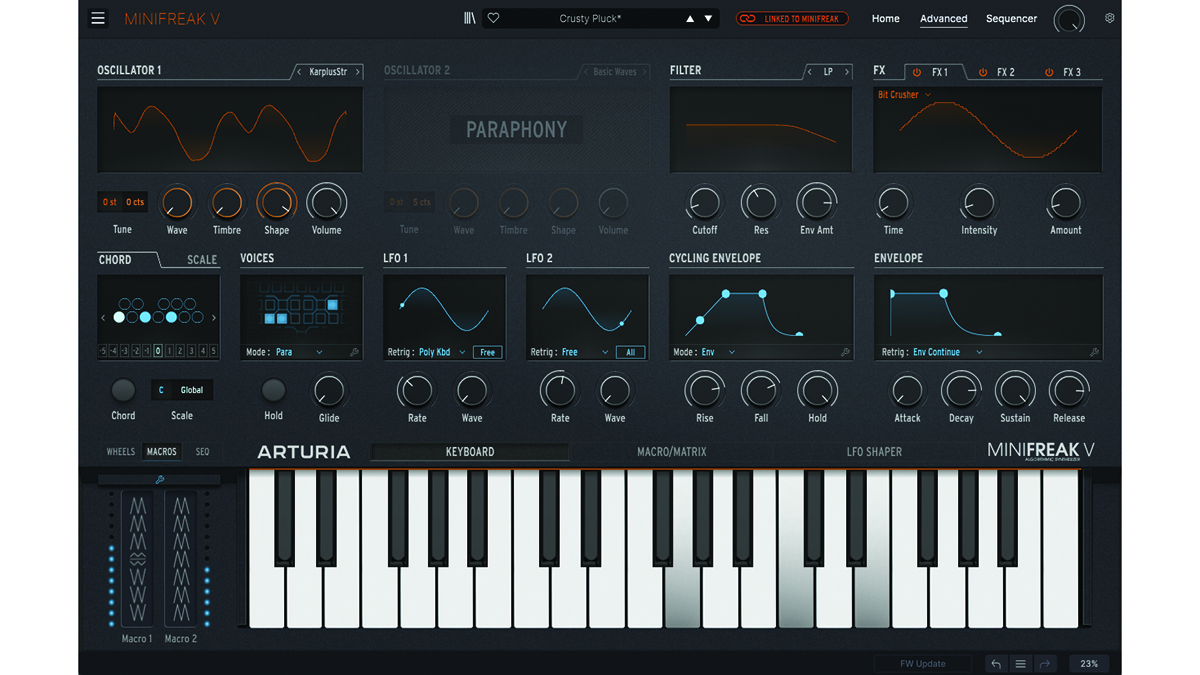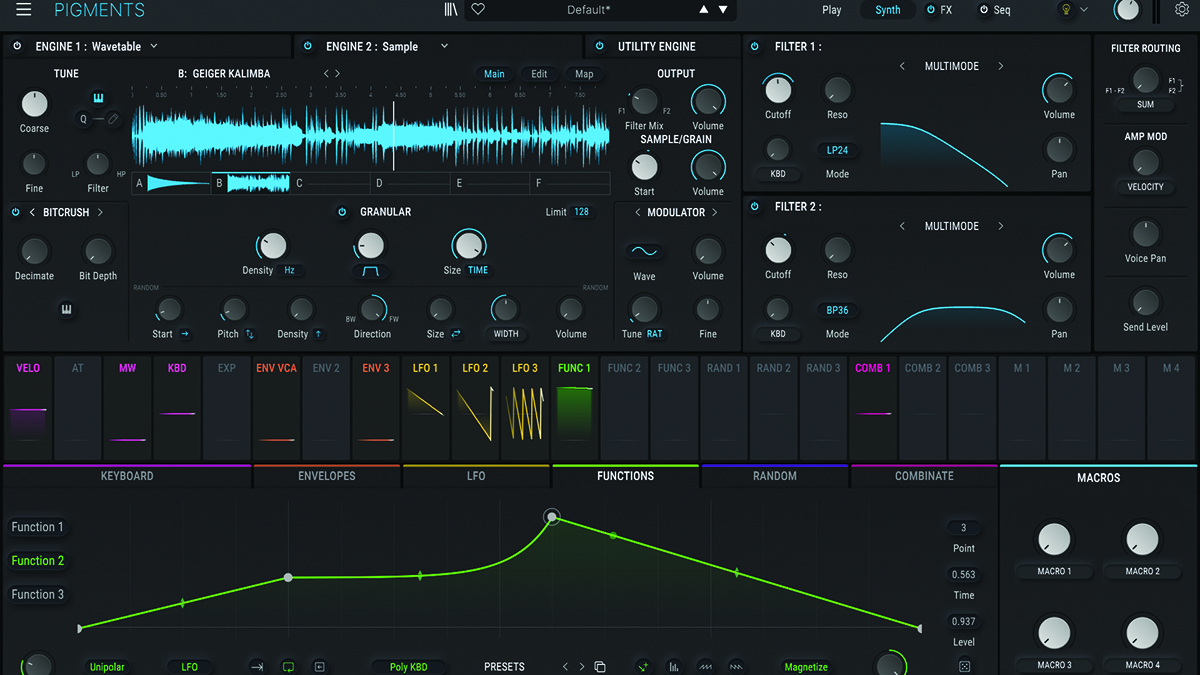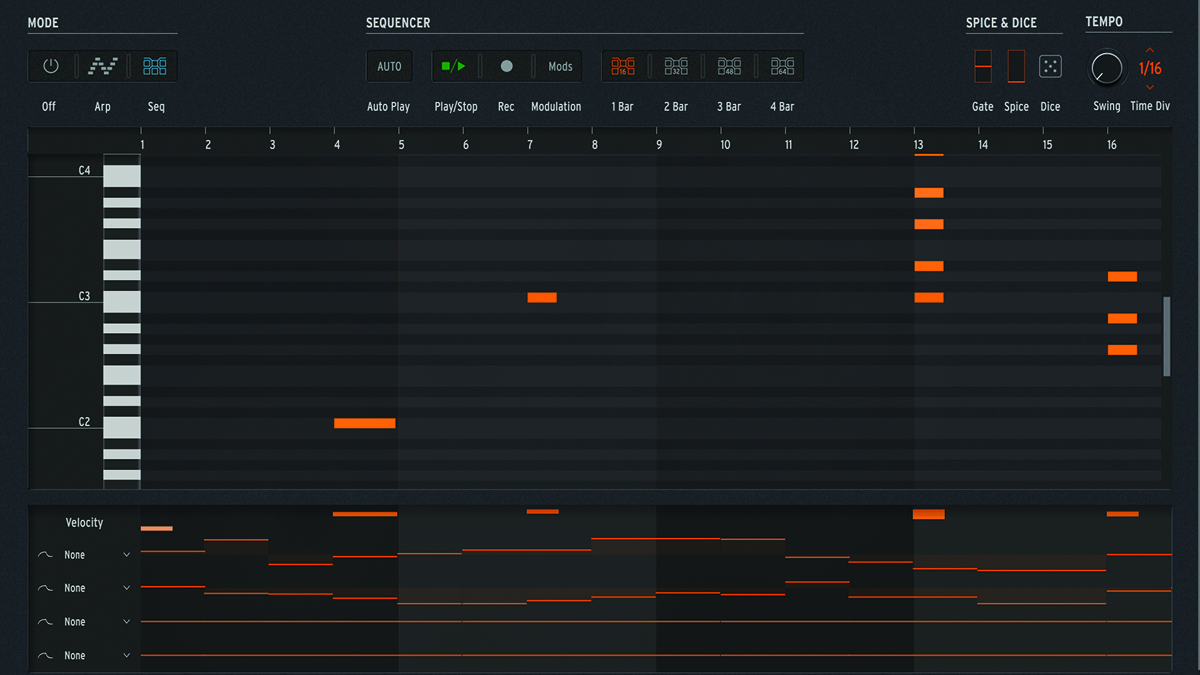MusicRadar Verdict
A near-perfect copy of the recently released hardware, it fully deserves its place amongst Arturia’s upper echelons.
Pros
- +
Algorithmic oscillators give wide variation of tones and timbres.
- +
Near-perfect modelling of hardware’s analogue filter.
- +
Unconventional Cycling envelope and user-definable LFO patterns.
Cons
- -
Quite pricey.
- -
Synth engine is monaural.
MusicRadar's got your back
Arturia MiniFreak V: What is it?
The power of Arturia’s Freak range of synths comes from the algorithmic oscillator that was developed for the series. These oscillators can load different synthesis engines – ie algorithms – allowing them to completely change their sound and character. Cleverly, Arturia has arranged things so that each algorithm has just three editable parameters, and these always have a certain similarity of function, no matter what the algorithm is.
Two of these oscillators sit at the heart of this new software iteration of the MiniFreak, and Arturia has included a whopping 21 different algorithms for you to load into them.
Mac OS 10.13+, 4GB RAM, 4 cores CPU, 3.4GHz (4.0GHz Turbo-boost) or M1 CPU, 3GB free hard disk space, OpenGL 2.0 compatible GPU.
Win 10+ (64-bit), 4GB RAM, 4 cores CPU, 3.4GHz (4.0GHz Turbo-boost), 3GB free hard disk space, OpenGL 2.0 compatible GPU.
Works in Standalone, VST, AAX, Audio Unit, NKS (64-bit DAWs only).
These offer users a veritable showcase of all of the different synthesis systems that exist out there, from the more common approaches like subtractive and FM, right the way through to rarer and more exotic techniques such as additive, Karplus Strong and formant synthesis.
The algorithms can do more than just synthesis too: the first oscillator can load the Audio In algorithm, allowing you to process signals through the synth’s engine, whilst six of the algorithms (four types of filter, a bit crusher and an FM/RingMod processor) are available only to the second oscillator where they process the output of the first oscillator.

Arturia MiniFreak V: Performance and verdict
Arturia has a wealth of experience modelling synths, and they’ve brought this to bear on MiniFreak V’s exceptionally accurate model of the hardware’s analogue filter. Gentle settings give lovely, warm, wallowy tones, whilst at the other end of the scale, the filter drips with analogue grittiness and character.

• Arturia Pigments
Few synths can match the shapeshifting abilities of Pigments.
• BLEASS Megalit
Boasts twin wavetable oscillators and 130 foldable wavetables. Big sound and a small footprint.
Moving on to modulation, the synth offers a standard ADSR envelope generator, hard-wired as the amp and filter envelope, as well as a so-called “Cycling” envelope. This is a three-stage affair that can be one-shot-triggered in the same way as a standard envelope, or that can cycle in an LFO-like manner. In terms of actual LFOs, MiniFreak V has two for you to play with. These provide a few shapes over-and-above the usual suspects – ramped sawtooth waves, for example – but their pièce de résistance is that they allow you to create custom LFO patterns.
Another source of modulation – and notes – is MiniFreak V’s built-in pattern sequencer. This lets you define patterns of up-to 64 steps in length, made up of polyphonic notes and four controller lanes. The sequencer can run its programmed pattern as-is in a constant loop, but it’s more useful when triggered and transposed by the notes you play. It also has an arpeggiator mode offering the usual up, down, up & down patterns.

Carbon copy
A three-slot stereo FX section with choice of 10 effect types rounds things off. This is most welcome, not because MiniFreak V sounds weak without the effects (it doesn’t) but because the synth is otherwise entirely monaural. Having the built-in effects is so much more convenient than having to constantly add effects plugins every time you use the instrument.
Being based on a hardware instrument that’s almost entirely digital – and entirely of Arturia’s own design – means that there’s no practical difference between MiniFreak V and MiniFreak. The oscillators, algorithms, LFOs, envelopes – everything barring the filter – is translated directly from the hardware, and you’d be very hard pressed to tell the difference in a listening test. Pairing the software with the hardware brings advantages of its own, but is in no way necessary to get the most out of this remarkably flexible, phenomenal-sounding synth.
MusicRadar verdict: A near-perfect copy of the recently released hardware, it fully deserves its place amongst Arturia’s upper echelons.
Arturia MiniFreak V: The web says
"Like its hardware counterpart, MiniFreak V is an astonishing synth. Its algorithmic oscillators give it a huge range of different voices, and the quality of sound is richly satisfying."
MusicTech
Arturia MiniFreak V: Hands-on demos
Arturia
Jef Gibbons
Synth Anatomy
Patrick Breen
Arturia MiniFreak V: Specifications
- Mac OS 10.13+, 4GB RAM, 4 cores CPU, 3.4GHz (4.0GHz Turbo-boost) or M1 CPU, 3GB free hard disk space, OpenGL 2.0 compatible GPU.
- Win 10+ (64-bit), 4GB RAM, 4 cores CPU, 3.4GHz (4.0GHz Turbo-boost), 3GB free hard disk space, OpenGL 2.0 compatible GPU.
- Works in Standalone, VST, AAX, Audio Unit, NKS (64-bit DAWs only).
- CONTACT: Arturia
Computer Music magazine is the world’s best selling publication dedicated solely to making great music with your Mac or PC computer. Each issue it brings its lucky readers the best in cutting-edge tutorials, need-to-know, expert software reviews and even all the tools you actually need to make great music today, courtesy of our legendary CM Plugin Suite.
“Excels at unique modulated timbres, atonal drones and microtonal sequences that reinvent themselves each time you dare to touch the synth”: Soma Laboratories Lyra-4 review
“I used everything I knew about music”: How Green Day exceeded expectations with their most ambitious song
YouTube just added AI tools that makes musicians, library music and video editors redundant











